Many brands invest heavily in how they communicate their products and services, but often overlook the importance of listening. The reality is, more brands are beginning to understand the value of tracking conversations that mention them to gain insights and stay competitive. As this need becomes more urgent, we’ve put together a list of the most reliable social listening tools marketers can use to monitor public conversations, understand sentiment, and make more customer-oriented decisions.
Social media is full of conversations about brands, products, services, news, and everything in between. People are sharing opinions, asking questions, and reacting to what’s happening in the world. For businesses, these conversations can be a valuable source of insight.
That’s where social media listening tools come into play. These tools help you keep track of what people are saying about your brand, your competitors, and your industry. They collect and analyze public conversations across platforms like Instagram, TikTok, Facebook, LinkedIn, X (formerly Twitter), Reddit, and more. Suppose your focus is running a marketing campaign, managing a brand's reputation, or trying to understand your audience better. In that case, social listening gives you the information you need to make smarter decisions.
In this article, we’ll explain what social media listening tools do, why they matter, and how they’re used by brands. We’ll also share a list of 15 top tools to explore in 2025, complete with a breakdown and the key features we think you’ll enjoy.
But first, let’s take a closer look at what social media listening means.
What is a social media listening tool?
A social media listening tool is software that tracks and analyzes public mentions of specific keywords or topics across social platforms and websites. These keywords might include your brand name, product names, hashtags, industry terms, or even your competitors.
The goal is to understand what people are saying and how they feel. Most tools will show you things like:
How often a keyword is mentioned
Whether the sentiment is positive, neutral, or negative
Which platforms or regions the conversation is happening on
What the main topics or themes are
This goes beyond just seeing who tagged your account. It’s getting the broader picture of how your brand is being talked about, even when you're not directly mentioned.
Social media listening tools join the ranks of other tools in a marketer's toolkit. While you may have heard of social media management or scheduling platforms, social listening tools are another vital component for any brand manager’s arsenal.
Top 15 social media listening tools
1. HypeAuditor

HypeAuditor’s Media Monitor is a powerful social listening tool designed to help brands track mentions and media coverage across social platforms and the web, even when they aren’t directly tagged. It’s built to give a broader view of brand visibility, picking up on indirect mentions that other tools may miss. The platform is useful for tracking conversations around marketing campaigns, product launches, or industry topics, and helps users understand how their brand is being talked about across different media types and regions.
What sets Media Monitor apart is how it connects social listening with influencer and media tracking. You can see who’s mentioning your brand – from creators to journalists – and view engagement metrics and sentiment in one place. The dashboard is simple to navigate, with filters for platform, tone, and time period, and it integrates well with other tools in HypeAuditor’s suite. For teams working across PR, influencer marketing, or brand management, it’s a practical way to monitor reputation and stay informed.
Key features:
Tracks brand and keyword mentions across social media platforms and online media
Real-time updates with historical data and sentiment analysis
Identifies media outlets, influencers, and creators behind brand mentions
Customizable dashboard for easy campaign tracking and reporting
2. Sprout Social

Sprout Social is a widely used platform that offers a mix of social media management and listening features. Its listening tool helps users track brand mentions, keywords, and sentiment across major social media platforms, including X (formerly Twitter), Instagram, Facebook, and LinkedIn. It’s designed for teams that want to keep an eye on conversations and understand how people are talking about their brand or industry. The platform also includes reporting features that can support content and campaign planning. While it may not offer the depth of analysis found in some specialized tools, it’s a reliable option for brands already using Sprout for scheduling and engagement.
Key features:
Monitors keywords and brand mentions across major social platforms
Tracks sentiment and conversation trends over time
Includes reporting tools to support a broader social media strategy
3. Brandwatch

Brandwatch is a leading social listening platform built for businesses that want a deeper understanding of online conversations. It combines powerful AI technology with access to billions of public data points across social media, blogs, forums, and news sites. Whether you're analyzing sentiment trends, researching consumer behavior, or tracking your brand's reputation, Brandwatch delivers insights that go far beyond surface-level mentions. The platform’s advanced dashboards help marketing teams, agencies, and analysts uncover themes, compare brand performance over time, and make data-driven decisions. It’s particularly well-suited for businesses that rely on social listening data to support high-level strategy, crisis response, and campaign planning.
Key features:
AI-powered sentiment and emotion analysis
Access to billions of real-time and historical social data points
Highly customizable reporting dashboards
4. Talkwalker

Talkwalker offers a powerful suite of tools for social media listening, with broad coverage across global platforms, blogs, podcasts, and even visual content. It’s a go-to choice for brands looking to track and understand what’s being said about them, not just in text but in images and video as well. One of Talkwalker’s standout features is its ability to spot emerging trends before they peak, using AI to surface predictive insights. With over 150 languages supported, it's also a strong option for international teams who need to monitor conversations across multiple markets. From tracking sentiment around a campaign to doing competitor analysis, Talkwalker delivers clarity at scale.
Key features:
Visual and text-based content tracking, including logos in images
AI-powered trend prediction and topic clustering
Multi-language monitoring for global brands
5. Meltwater

Meltwater blends traditional media monitoring with advanced social listening, creating a hybrid platform that offers one of the most well-rounded overviews of brand presence available today. It collects and analyzes data from news outlets, blogs, and social media platforms, all in one place. This makes it especially useful for communications teams who want to understand both public sentiment and media coverage in tandem. Meltwater also offers customizable dashboards and real-time alerts, allowing teams to monitor fast-moving conversations or crises as they develop. If your business spans both PR and marketing, Meltwater is a strong contender that brings both worlds together through clean reporting and deep insights.
Key features:
Combined media and social listening in one platform
Real-time alerts and customizable dashboards
Competitor and market trend tracking
6. Mention

Mention is a flexible and user-friendly social media listening tool that helps businesses monitor online conversations in real time. It tracks brand mentions, keywords, and competitors across social media platforms, news sites, blogs, and forums. One of Mention’s strengths is its live alert system, which keeps you informed the moment your selected terms appear in new content. This makes it ideal for smaller teams or fast-moving brands that need to respond quickly to online chatter. The platform also supports collaboration features, so multiple team members can work together to analyze data or manage responses. With its easy interface and affordable plans, Mention is a great entry point for businesses looking to build a social listening strategy.
Key features:
Real-time monitoring across social media and the web
Live alerts for brand or keyword mentions
Team collaboration tools are built into the dashboard
7. BuzzSumo

While BuzzSumo is best known for content discovery and performance analysis, it also offers strong listening features that help marketers track trends, measure engagement, and find influential voices. Instead of focusing on general brand mentions, BuzzSumo zeroes in on what content is performing best in your space – who’s sharing it, how far it’s reaching, and what topics are gaining traction. This makes it a favorite among content marketing teams and social media marketers who need to stay on top of trending topics. It’s also a useful tool for competitive research, helping you identify what’s working for others and how you can improve your strategy.
Key features:
Content performance tracking and topic analysis
Influencer identification and outreach tools
Competitive benchmarking and backlink insights
8. Awario

Awario is a powerful yet affordable social media listening and monitoring tool built for brands that need real-time insights without enterprise pricing. It scans the web and social media platforms to collect brand mentions, keyword appearances, and competitor chatter, all in one intuitive interface. With multilingual support and Boolean search operators, users can create highly targeted listening streams that surface exactly the kind of content they're looking for. Awario also includes sentiment analysis and influencer discovery, making it a great option for brands that want actionable insights to guide marketing campaigns or customer engagement efforts. It’s especially popular with small businesses and agencies.
Key features:
Real-time brand and keyword tracking with custom search logic
Sentiment analysis across social media and the web
Influencer discovery based on organic mentions
9. Keyhole
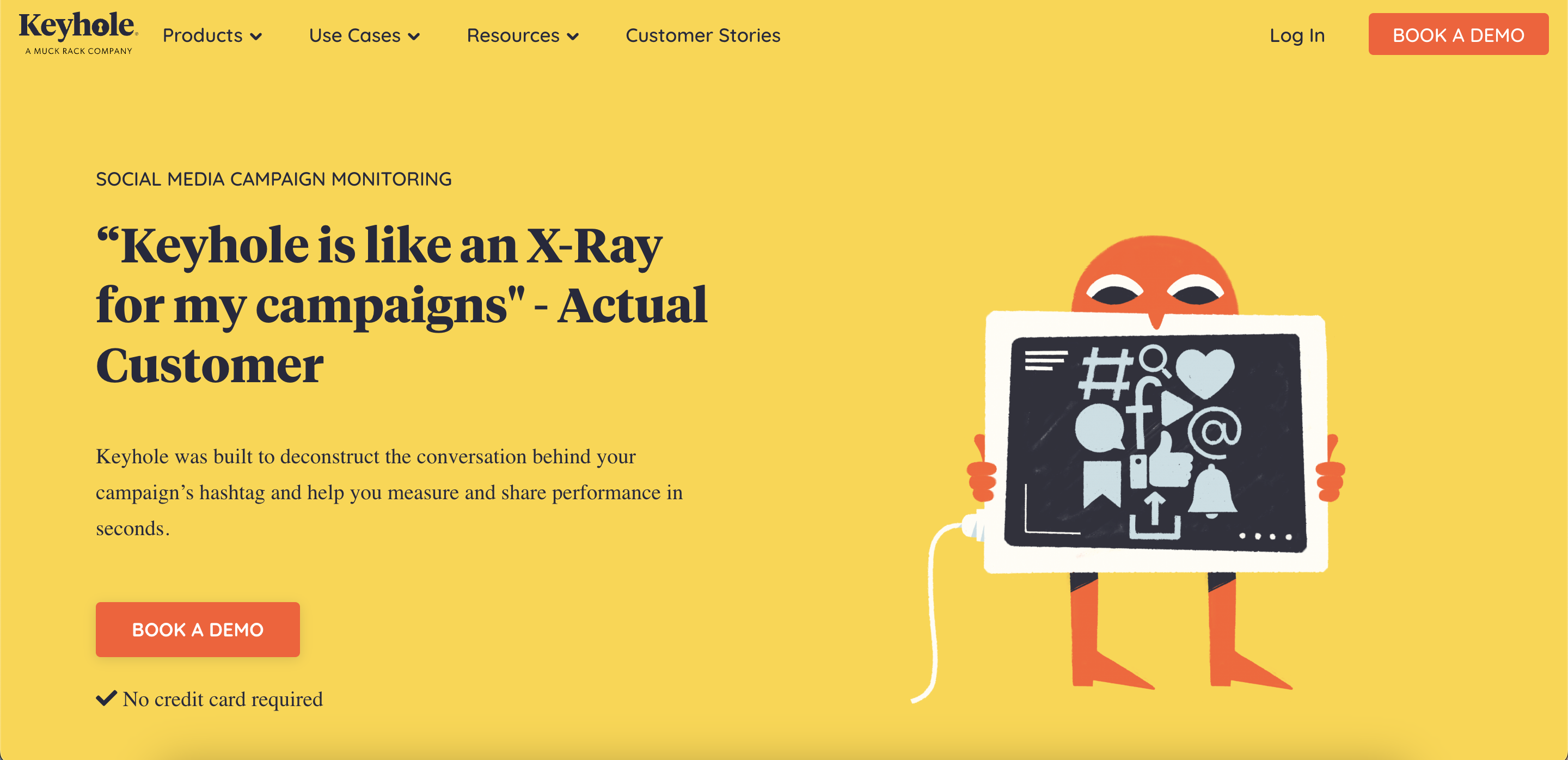
Keyhole is a real-time social media analytics and listening tool that’s especially popular for tracking hashtags, keywords, and account performance. It’s widely used by marketing teams, agencies, and event organizers who need a clear, visual way to measure how campaigns are performing across platforms like Instagram, Twitter (now X), Facebook, and LinkedIn. Keyhole stands out for its simple setup and visual dashboards, making complex data easy to understand and act on. It also offers predictive analytics, helping you forecast the potential reach and engagement of future content. If you’re running ongoing social media campaigns or monitoring branded hashtags, Keyhole is a strong, time-saving option.
Key features:
Real-time hashtag, keyword, and campaign tracking
Visual dashboards for campaign performance metrics
Predictive analytics to estimate future engagement and reach
10. Iconosquare
![]()
Iconosquare began as an analytics tool for Instagram but has since grown into a well-rounded social media management and listening platform. It now supports Instagram, Facebook, LinkedIn, and TikTok, with features that help you monitor conversations, track performance, and optimize publishing. While it’s not a full-scale social media listening platform like others on this list, it offers valuable audience insights and engagement tracking that can help shape your content strategy. Iconosquare is especially useful for social media marketers focused on visual-first platforms and for brands that want to track competitor activity and refine their social media presence without being overwhelmed by complex data.
Key features:
Audience and competitor tracking on Instagram, TikTok, and more
Performance metrics and engagement insights
Scheduling and analytics tools integrated into one platform
11. Onclusive Social

Onclusive Social, formerly Digimind, is an enterprise-level social listening tool built for businesses that need detailed analytics, global media monitoring, and deep competitive intelligence. It allows brands to track public conversations, sentiment, and emerging trends in over 200 languages, making it a solid choice for multinational companies. One of its strengths is its ability to combine social media listening with broader market intelligence, which helps brands stay ahead of not just social trends but also shifts in industry landscapes. The platform also includes customizable dashboards, reporting features, and automated alerts – ideal for teams that want to keep stakeholders informed without manually pulling data every day.
Key features:
Multilingual monitoring across social and traditional media
Market and competitive intelligence integrations
Custom dashboards and automated insights delivery
12. YouScan

YouScan is a sophisticated social media listening platform that leverages AI to provide businesses with deep insights into consumer opinions and brand perception. Its standout feature is its industry-leading image recognition capability, allowing brands to monitor visual content for logos, scenes, and objects, thus capturing mentions that text-based tools might miss. With the introduction of Insights Copilot, powered by ChatGPT, YouScan offers users an interactive assistant to derive actionable insights from vast amounts of social data. This makes it an invaluable tool for companies aiming to understand their audience's visual and textual conversations comprehensively.
Key features:
Advanced image recognition for visual content analysis
AI-powered Insights Copilot for interactive data exploration
Real-time monitoring across multiple social media platforms
13. Quid

Quid is an advanced social listening and analytics platform that combines real-time social media monitoring with deep consumer and market intelligence. It analyzes millions of data points daily, helping businesses uncover emerging trends, understand consumer sentiment, and make informed decisions. Its generative AI capabilities enable predictive analysis, allowing brands to anticipate market shifts and customer needs. This makes Quid particularly valuable for enterprises seeking to stay ahead in competitive markets.
Key features:
AI for trend prediction and market analysis
Comprehensive monitoring of social media and traditional news sources
Customizable dashboards for tailored insights
14. Mentionlytics

Mentionlytics is an AI-powered social media and web monitoring tool designed to help businesses track brand mentions, analyze sentiment, and identify influencers. Its Social Intelligence Advisor (SIA) provides actionable recommendations based on the data collected, assisting brands in refining their marketing strategies. With coverage across various platforms, including TikTok, X, Instagram, and more, Mentionlytics offers a comprehensive view of a brand's online presence. Its user-friendly interface and robust analytics make it suitable for businesses of all sizes aiming to enhance their digital footprint.
Key features:
AI-driven Social Intelligence Advisor for actionable insights
Real-time monitoring across social media and web platforms
Influencer identification and social media sentiment analysis tools
15. Later

Later, initially known for its social media scheduling capabilities, also offers a powerful AI-enabled social listening tool. This tool provides marketers with actionable insights into brand sentiment, trending topics, and competitor analysis, primarily focusing on platforms like Instagram and TikTok. By integrating social listening with its existing suite of tools, Later enables brands to streamline their content strategy, measure campaign performance, and engage more effectively with their audience. Its intuitive interface and targeted analytics make it a valuable asset for brands looking to enhance their social media presence.
Key features:
AI-powered analysis of brand sentiment and trends
Integration with Instagram and TikTok for focused insights
User-friendly dashboard for streamlined social media management
Why should brands use social media listening tools?
Social media listening tools have become an essential part of any strong marketing toolkit. Whether you're a small business owner, part of an agency team, or leading a brand's digital presence, these tools help you go beyond surface-level metrics and really understand your audience. And they do more than just track mentions – when used well, they can inform everything from your content strategy to your business decisions.
Here are ten of the most important reasons brands use social listening tools and why they’re a smart investment for anyone serious about growing through social media.
1. Understand brand perception across social platforms
One of the most common – and valuable – uses for a social media listening tool is understanding how people perceive your brand online. Social listening software helps you monitor mentions across platforms like Twitter, Instagram, Facebook, LinkedIn, YouTube, and even forums or blogs. But it doesn’t stop at counting mentions – it goes deeper, using sentiment analysis and other social insights to reveal whether conversations about your brand are positive, negative, or neutral.
By analyzing this data over time, you can spot patterns and shifts in how your brand is viewed by your audience. Are people more excited after a product launch? Did a recent social media campaign have an unexpected negative reaction? Social media listening tools give you the context to answer those questions, making them one of the most powerful tools for long-term brand monitoring and audience analysis.
This type of social listening data can shape your content marketing, customer experience, and overall business strategy.
2. Spot and respond to PR issues before they grow
In today’s always-on world, brand reputation can shift fast. A single tweet, review, or viral comment can set off a wave of discussion, and if you’re not monitoring media chatter across social networks, you could miss the early warning signs.
That’s where a strong social media listening strategy proves its value. Social listening platforms track conversations as they happen, allowing brands to catch negative sentiment or growing complaints early, often before they hit your mentions or DMs directly. This kind of real-time tracking is especially important for PR teams, community managers, and customer service teams who need to respond quickly and thoughtfully.
The best social media monitoring platforms even offer alerts or real-time social listening streams, so you can act before small issues turn into major crises. That makes social listening a key part of protecting your brand across social media channels.
3. Discover trending content and new marketing opportunities
Social media is constantly shifting. New topics trend every day, and if you’re not tuned in, it’s easy to fall behind. Social media listening tools help brands stay ahead by revealing what people are talking about – not just concerning your brand, but across your entire industry.
By tracking keywords, hashtags, and emerging topics, you can identify rising trends before they go mainstream. This kind of insight is gold for content marketing teams, helping them create timely and relevant social posts that resonate with the moment. It can also guide your broader social media strategy, pointing you toward themes or conversations worth joining.
From creating better blog posts to launching more relevant campaigns, using social listening data to stay on top of trending content can give your brand a creative edge.
4. Track marketing campaign performance in real time
Every marketing campaign comes with a goal – maybe it’s to drive awareness, engagement, or product sales. But how do you know if your message is landing the way you intended?
A social media listening tool lets you go beyond likes and shares to understand what people are saying about your campaign. Whether you’re launching a branded hashtag, promoting a new product, or working with influencers, social listening helps you measure real-time reactions across social platforms.
You can track keyword mentions, monitor sentiment shifts, and get live feedback from your audience. This allows your team to adjust content, clarify messaging, or even rethink parts of the campaign while it's still running – something traditional marketing analytics might miss.
It’s one of the best ways to ensure your marketing campaigns stay relevant and responsive.
5. Keep an eye on competitors and benchmark performance
Social listening isn’t just about your own brand. One of the biggest advantages of social media listening platforms is their ability to track competitor mentions and compare sentiment, share of voice, and engagement levels across the industry.
Want to know how your latest launch stacks up against a competitor’s, or maybe what customers are saying about similar products? A good social media listening and monitoring tool can tell you. This kind of competitive intelligence is key to refining your messaging, identifying market gaps, and staying one step ahead.
You can also benchmark performance using tools that compare brand health and conversation volume across the market, making social listening software a valuable part of your broader business strategy.
6. Learn what your audience really cares about
Audience analysis is one of the more underrated uses of social listening. When you listen to what people are saying – in their own words – you can learn what matters most to them, what problems they face, what kind of language they use, and how they talk about your category or competitors.
This type of insight is especially useful for building detailed customer personas and shaping your content strategy. It helps you create marketing messages that reflect what your audience cares about, not just what you think they care about.
Whether you’re refining your tone of voice, brainstorming new social media content, or building better email campaigns, a smart social listening program can give you a clearer, more accurate view of your target audience.
7. Support customer service and improve social media engagement
Sometimes customers need help, and they ask for it, but don’t tag your brand directly. Other times, they post feedback, ask questions, or even vent frustration without any direct callout. If you’re only relying on notifications or basic monitoring, you’ll miss those conversations entirely.
That’s why many businesses now use social media listening tools as part of their customer service workflow. By monitoring relevant keywords – including brand nicknames, misspellings, or product names – your support team can spot issues early and step in to help. This kind of proactive service builds trust, increases social media engagement, and often turns unhappy customers into loyal fans.
It’s also a key reason why social media listening is about more than just marketing. It’s a full business tool that supports multiple teams.
8. Identify influencers and brand advocates
One of the more exciting outcomes of a strong social listening strategy is the ability to spot people who are already talking positively about your brand, even if they aren’t on your radar yet.
Maybe it’s a niche influencer on YouTube or TikTok. Maybe it’s a long-time customer sharing love on Pinterest or LinkedIn. Either way, social listening software can help you find and engage with potential partners who already believe in what you do.
This makes influencer discovery more organic and less transactional. Instead of always searching for new influencers through cold outreach or directories, you’re finding them through real social media engagement.
9. Measure share of voice and overall visibility
How much space does your brand take up in the online conversation compared to competitors? That’s where “share of voice” comes in, and it’s something most powerful tools in the listening space can measure.
By analyzing mention volume, reach, and engagement across social networks, a social media listening tool can calculate your share of voice within your category. This is a great tool for brand health tracking, especially if you’re running multiple marketing campaigns or working to raise awareness in a crowded space.
When combined with other analytics like sentiment and keyword trends, share of voice becomes a meaningful KPI to track over time.
10. Gather product feedback and guide your product strategy
Your customers are talking about your product online – whether you’re listening or not. Social media channels are filled with feedback, feature requests, comparisons, and suggestions. By monitoring those conversations, you can collect feedback that might never make it into a formal survey or support ticket.
This kind of social listening data is incredibly useful for product teams, giving them insight into real-world usage, frustrations, and feature requests. It can help guide roadmap decisions and prioritize updates based on what people want.
Listening is also a way to validate product-market fit over time, especially if you’re launching new versions, entering new markets, or experimenting with positioning.
Methodology
We research each tool or platform using a combination of manual work and help from AI tools. Our team begins by searching for platforms that offer social listening tools on Google, then expands the search with support from AI tools like ChatGPT and Perplexity. After building a list of potential options, we go through them one by one to check their official websites and, when possible, explore the dashboards to confirm they actually provide the feature we’re writing about.
All features, pricing, and product details are pulled directly from official sources to keep the information accurate. While we sometimes use AI to refine and proofread our writing, every fact is checked manually by our team. AI helps us move faster, but the final judgment always comes from us.
For any research or data we reference, we use our own surveys or trusted external sources like published studies, research papers, and reports from well-regarded media.
Final thoughts
Social media listening is no longer something brands can afford to ignore. It’s one of the most useful ways to understand what people are saying – not just to you, but about you, your industry, and your competitors. Whether you're tracking how a campaign is performing, keeping an eye on brand sentiment, or looking for ideas based on real conversations, social listening gives you the kind of insights that are hard to find anywhere else.
The good news is that there are plenty of tools to choose from – some are simple and easy to get started with, while others are more advanced and built for deep analysis across multiple platforms. What matters most is finding one that fits your goals and helps you turn what people are saying online into something actionable. Once you’ve got that in place, you’ll be in a much stronger position to make smart, informed decisions across your marketing, content, and brand strategy.




